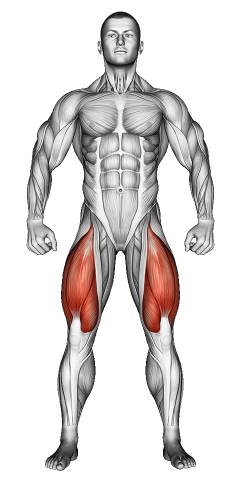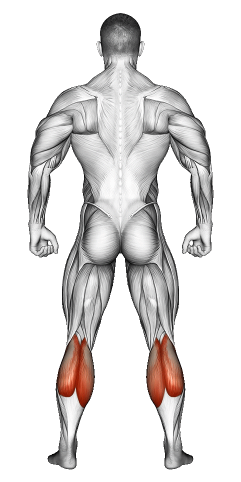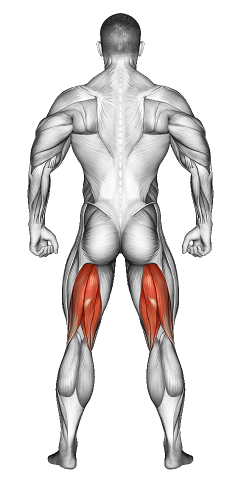A Steps: Video Tutorial & Exercise Guide

Written By: Claude Michael
Updated: Dec 26, 2024
| Workout | A Steps |
| Primary Muscle Group | Quads |
| Secondary Muscle Group | Calves, Hamstrings |
| Equipment Required | None |
| Force Type | Bodyweight |
| Mechanics | Compound |
| Exercise Type | Cardio (Low-Intensity) |
| Difficulty | Beginner |
A Steps: Video Tutorial & Exercise Guide
Secondary Muscles Group
A Steps: Step-by-Step Guide
- Step 1: Stand tall with your feet hip-width apart and arms relaxed at your sides. Engage your core and focus on keeping your posture strong. This is your starting position.
- Step 2: Lift your right knee up towards your chest, aiming for hip level or slightly higher. Keep your core tight to maintain balance. As you lift, bring your left arm forward for a natural counterbalance, just like in a marching motion.
- Step 3: Lower your right foot back down smoothly and shift your weight evenly. Immediately lift your left knee towards your chest, bringing your right arm forward.
- Step 4: Continue alternating legs in a steady, controlled rhythm. Focus on smooth movements and controlled breathing, inhaling as one foot touches the ground and exhaling as you lift the opposite knee.
- Step 5: Keep moving at a steady pace for the set time or reps. This movement improves coordination, warms up your lower body, and engages your core.
A Steps: Overview
A Steps is a simple, low-impact cardio move that builds coordination, balance, and core engagement. This exercise suits beginners or those looking to warm up in a gentle, controlled way. It’s ideal for building fundamental strength and stability without intense impact.
A Steps: Benefits
A Steps strengthen your legs, improve core stability, and enhance balance. This exercise activates the muscles in your lower body while being gentle on your joints. It’s an effective warm-up that prepares your body for more intense movements, making it perfect for all fitness levels.
A Steps: Pro Tips & Advanced Techniques
- Engage Your Core: Keep your core tight to support balance with each knee lift.
- Stay Light on Your Feet: Control each step, placing your foot down gently to maintain a smooth rhythm.
- Use Your Arms: Swing your arms naturally as you lift each knee, helping with balance and coordination.
- Breathe Consistently: Inhale as you lower each foot, exhale as you lift each knee to keep a steady rhythm.
A Steps: Progression Plan
Beginner
Intermediate
Advanced
A Steps: Frequently Asked Questions (FAQs)
What muscles do A Steps work?
+A Steps target your legs, especially your thighs, while also engaging your core for balance.
Can I add A Steps to any workout?
+Yes! A Steps work well for warm-ups, cool-downs, or low-impact cardio sessions.
How do A Steps improve cardiovascular health?
+A Steps gently raise your heart rate, building a base of cardiovascular endurance without high impact.
Can A Steps help with weight loss?
+Absolutely! When combined with other exercises, A Steps can help with weight loss by increasing movement and burning calories.
How often should I do A Steps?
+Include A Steps in your routine 2-3 times a week, especially as a warm-up or on active rest days.
What mistakes should I avoid?
+Avoid rushing or stomping down heavily. Focus on smooth, controlled movements with a steady rhythm to protect your joints and maintain balance.
Share
Don’t Wish for It, Work for It – Join the FlexXP Newsletter Today!
Thank you for signing up for the FlexXP Newsletter!
This site is protected and the Google Privacy Policy and Terms of Service apply.


